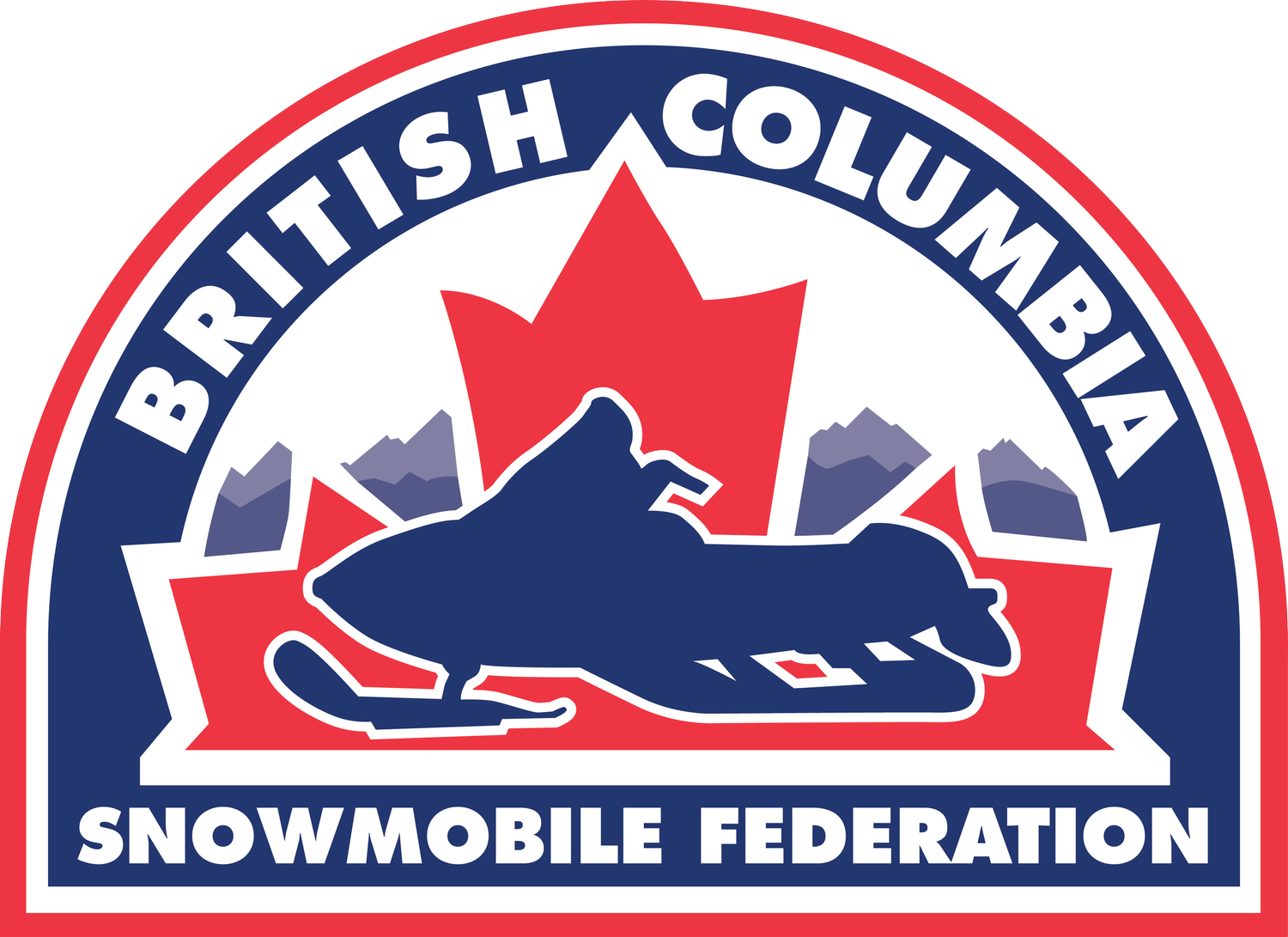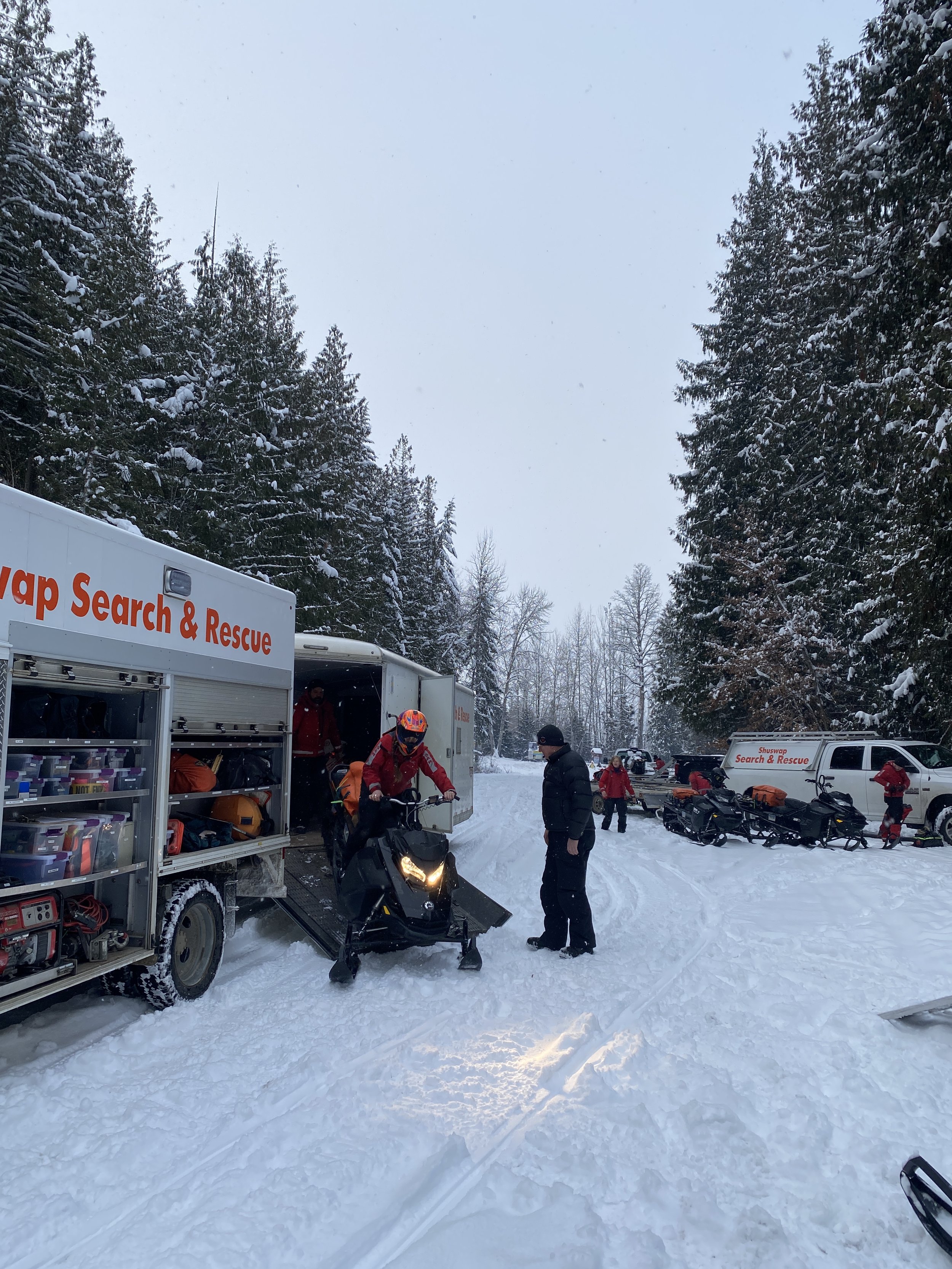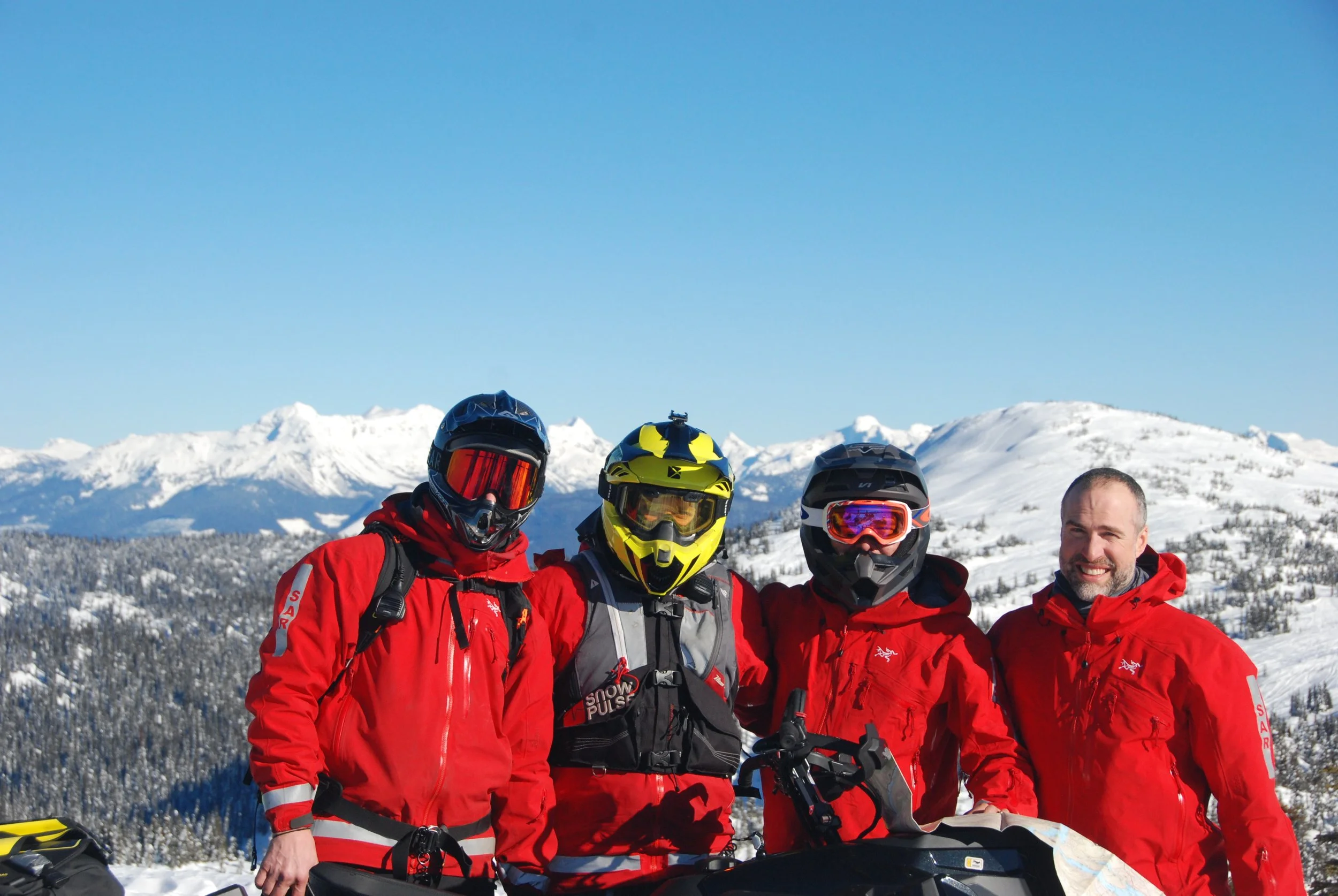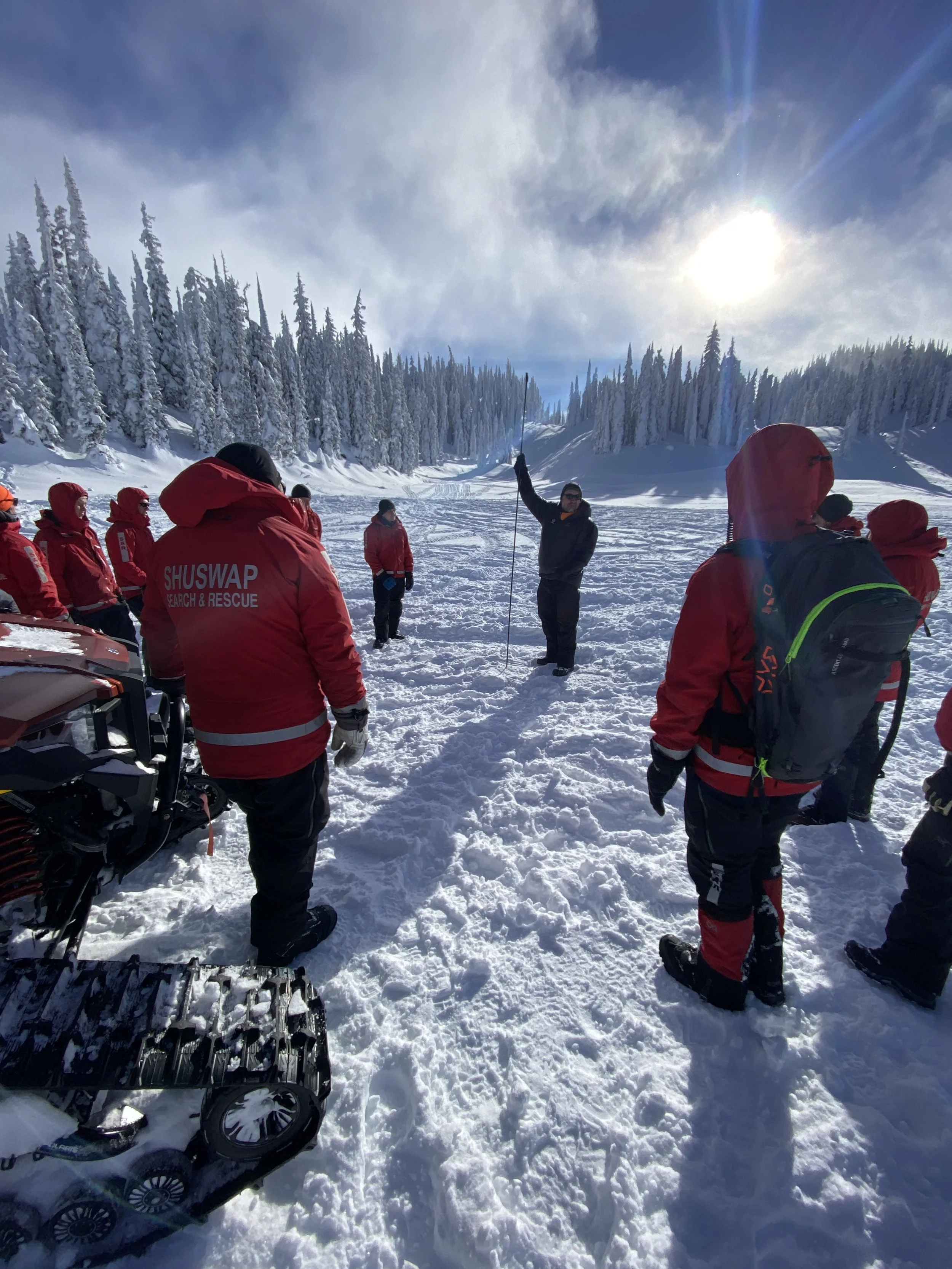Eyes in the Sky: How Drones Are Changing Search and Rescue for Snowmobilers
When the call comes in that a rider hasn’t returned at the end of the day, every minute counts. Search and Rescue teams across B.C. know that time, weather, and visibility can mean the difference between a good outcome and a tragic one. In Revelstoke, a new drone program is taking flight to give volunteers a powerful new tool in their mission to save lives.
While the program is based with Revelstoke Search and Rescue (RevSAR), its reach will extend across the region through strong partnerships with neighbouring teams like Shuswap SAR, which covers vast snowmobiling areas such as Blue Lake, Owlhead, Queest, and Fly Hills. When RevSAR’s drone is needed, mutual aid agreements ensure it can be deployed quickly anywhere in the region.
“Helicopters have always been an essential tool,” explains Steve Horton, a rider and Search and Rescue volunteer with Shuswap SAR. “But they’re expensive, dangerous, and not always available—especially during wildfire season. Drones allow us to fly safely, affordably, and even at night.”
Equipped with infrared and night-vision technology, the drone can locate a lost or injured person in the dark and guide rescuers directly to their position at first light. It can also scan avalanche paths, steep drainages, and dense forests where helicopters can’t safely fly. In some cases, drones may even deliver survival gear or medical supplies to stranded individuals until teams can reach them.
Beyond improving search accuracy, drones also reduce risk for volunteers, minimizing the need to send rescuers into hazardous terrain. They can gather footage for avalanche professionals to assess hangfire remotely—another major safety win for ground crews.
That technology is especially relevant given the realities of modern rescue work. During the 2024–2025 winter season, B.C. SAR teams responded to 112 snowmobile incidents and two snow-bike incidents across the province. The Southeast region—home to many of B.C.’s busiest sledding destinations—recorded 48 of those calls, underscoring just how active local SAR volunteers are. The most common causes included loss of control or crashes (24), riders exceeding their ability (25), and injuries (17).
This kind of innovation doesn’t happen without community support. Earlier this year, Sled Sicamous donated $1,000 toward RevSAR’s drone initiative—just one example of how snowmobile clubs and riders are giving back to the communities and causes that support them.
Across B.C., snowmobile clubs are making a difference every season—fundraising for their local SAR teams and Avalanche Canada, hosting avalanche awareness seminars and safety events, sharing stewardship and preparedness messaging, and maintaining trail systems, shelters, and safety caches that often assist SAR operations. Horton says the connection between snowmobile clubs and SAR is already strong, and with more structured collaboration, it can be even stronger.
“Snowmobile clubs across the province are very supportive of SAR teams,” Horton says. “We’re often overwhelmed by riders who want to help, but that has to be managed safely. The best results come when SAR and clubs train together, pre-register volunteers, and build on each other’s strengths. Sledders have the knowledge, skills, and equipment that can make a real difference when it’s done right.”
Last month, the RevSAR drone program officially took flight. Seven members completed their Transport Canada Advanced Drone Pilot Certificates and flight reviews, SAR Drone Tech 1 and 2 certifications, and ROC-A restricted operator’s licence through more than 50 hours of self-directed and instructor-led training. When the Matrice 400 arrives, RevSAR will be at the forefront of mountain search and rescue technology—another tool to bring subjects home. The team extends sincere thanks to the many generous donors whose support made this program soar.
What Riders Can Do
Horton, who has been sledding in B.C. for 15 years, says riders today are far better prepared than ever before—but there’s always room to improve. “Most sledders carry the right avalanche gear and are quick to help others, but carrying the gear isn’t enough—you need to know how to use it,” he explains.
To be ready for the unexpected, riders should also carry a satellite-based communication device such as an inReach, SPOT, Zoleo, or PLB, since there’s little to no cell coverage in most of B.C.’s backcountry. Of the 2024–2025 SAR snowmobile calls, nearly half were initiated through satellite messengers—a clear reminder of their importance. Riders should also leave a trip plan at home with details on their destination, group, and expected return time.
Sledders can strengthen their safety net by taking avalanche and first-aid training, practicing rescue skills, and supporting local SAR teams, Avalanche Canada, and snowmobile clubs that fund and deliver the safety initiatives keeping riders safe.
When riders invest in their own preparedness, and in the people and programs protecting them, everyone wins.
photos: Steve Horton and Revelstoke Search and Rescue
LEARN MORE
Adventure starts where the road ends—but smart riders know that preparation keeps it fun. Visit the LetsRideBC RideSmart Hub for everything you need to know before you go: safety tips, access information, and the video that’s inspiring a new generation of responsible riders.











